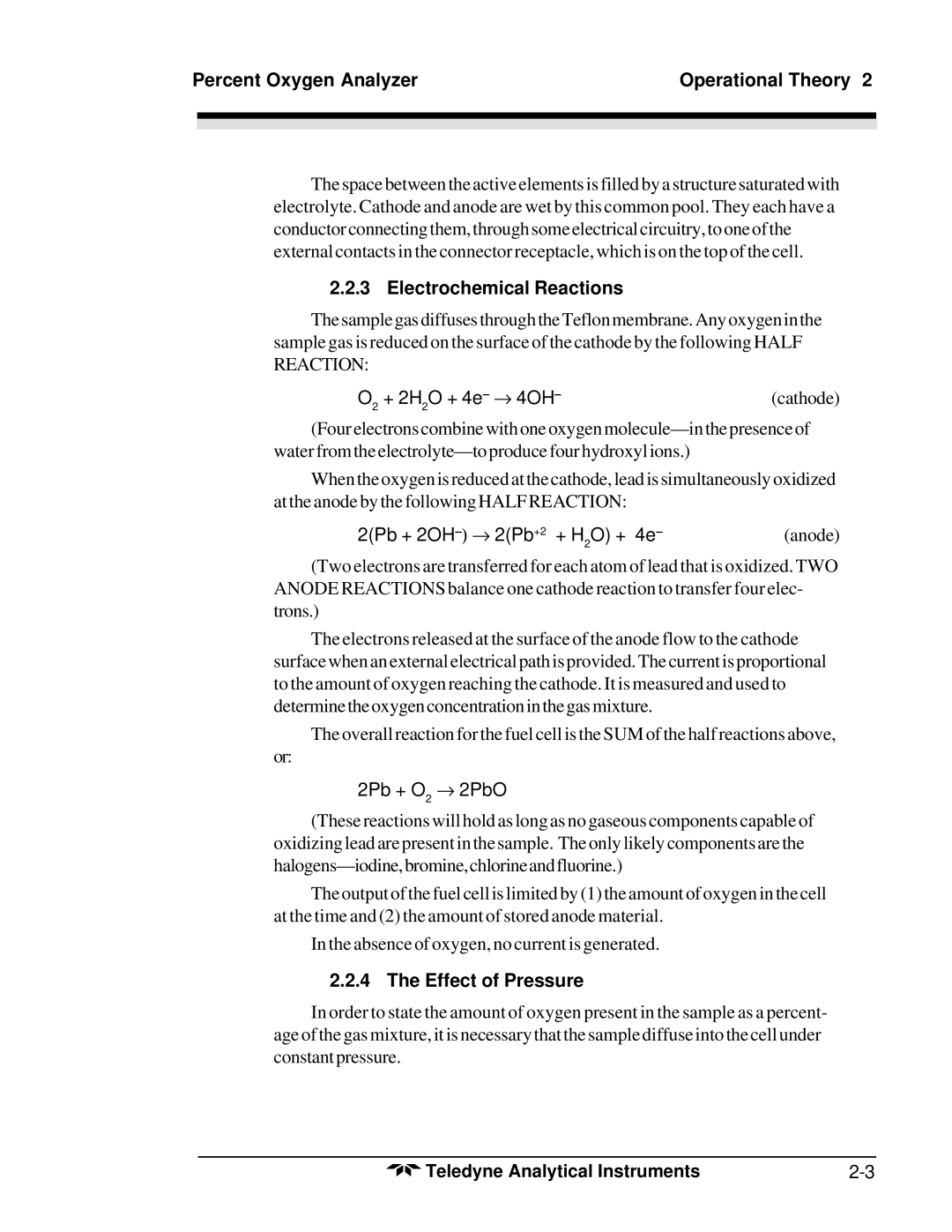Percent Oxygen Analyzer | Operational Theory 2 | |
|
|
|
|
|
|
|
|
|
The space between the active elements is filled by a structure saturated with electrolyte. Cathode and anode are wet by this common pool. They each have a conductor connecting them, through some electrical circuitry, to one of the external contacts in the connector receptacle, which is on the top of the cell.
2.2.3 Electrochemical Reactions
The sample gas diffuses through the Teflon membrane. Any oxygen in the sample gas is reduced on the surface of the cathode by the following HALF REACTION:
O | 2 | + 2H O + 4e– → 4OH– | (cathode) |
| 2 |
|
(Four electrons combine with one oxygen
When the oxygen is reduced at the cathode, lead is simultaneously oxidized at the anode by the following HALF REACTION:
2(Pb + | (anode) |
2 |
|
(Two electrons are transferred for each atom of lead that is oxidized. TWO ANODE REACTIONS balance one cathode reaction to transfer four elec- trons.)
The electrons released at the surface of the anode flow to the cathode surface when an external electrical path is provided. The current is proportional to the amount of oxygen reaching the cathode. It is measured and used to determine the oxygen concentration in the gas mixture.
The overall reaction for the fuel cell is the SUM of the half reactions above,
or:
2Pb + O2 → 2PbO
(These reactions will hold as long as no gaseous components capable of oxidizing lead are present in the sample. The only likely components are the
The output of the fuel cell is limited by (1) the amount of oxygen in the cell at the time and (2) the amount of stored anode material.
In the absence of oxygen, no current is generated.
2.2.4 The Effect of Pressure
In order to state the amount of oxygen present in the sample as a percent- age of the gas mixture, it is necessary that the sample diffuse into the cell under constant pressure.
Teledyne Analytical Instruments |
